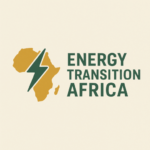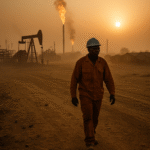In Kolwezi, in the heart of the Democratic Republic of Congo (DRC), the earth gives way to cobalt-rich soil. Every morning, hundreds of artisanal miners, many without helmets or boots, descend into makeshift pits, chasing a mineral powering the global shift to clean energy. Yet, despite cobalt’s global value, the benefits remain distant for many of those who mine it.
Africa’s critical mineral reserves are unmatched. From lithium in Zimbabwe and cobalt in the DRC to manganese in Gabon and uranium in Namibia, the continent sits on deposits central to the world’s energy future. But for decades, these minerals have left African shores raw, unprocessed, and unleveraged, feeding global tech supply chains while local communities remain mired in poverty.
This imbalance is now under scrutiny. A wave of resource nationalism, seen in countries like Zimbabwe and Ghana, signals a policy shift. The continent is no longer content to remain a raw material exporter. The new narrative: beneficiation, value chains, and local ownership.
From Extraction to Transformation
Zimbabwe made headlines in 2022 when it banned the export of raw lithium. Ghana followed in 2023 with a similar move for bauxite and manganese, demanding local processing. Sierra Leone is negotiating new mining contracts with clauses for domestic smelting. These steps signal a continental awakening to the true value of minerals not just as commodities, but as leverage for development.
“Processing minerals on African soil is a sovereignty issue,” said Ghana’s Minister of Lands and Natural Resources during a recent mining conference. “Every tonne exported raw is a missed opportunity for jobs, skills, and taxes.”
Yet this path is not without challenges. Building refineries, battery plants, and smelters demands huge capital, stable energy supplies, and skilled labour, resources not all countries possess.
For deeper context, our earlier post on Africa’s Climate Finance Crisis explores how underfunding remains a major barrier to infrastructure growth.
The Human Cost of Policy Shifts
In Ghana’s Central Region, where bauxite mining was once booming, Emmanuel, a middle-aged truck driver, speaks with uncertainty. “Since they said the ore must be processed here, some sites have paused operations. They say they’re waiting for the new factory. But in the meantime, we drivers sit idle.”
Across the continent in Kolwezi, DRC, Chantal, a 22-year-old mother of two, works daily in an informal cobalt pit. She has heard rumours of government crackdowns on unlicensed exports and new Chinese-funded processing zones. “They say the Chinese will build factories, but will they employ us? Or will we be pushed out?”
These local voices reveal a crucial dilemma: while value addition can benefit nations, without deliberate inclusion strategies, the poorest workers could be left behind.
Civil society groups are raising concerns. In Sierra Leone, land rights activists argue that new mineral policies, though pro-sovereignty, is sidelining community consultation. “You can’t build a refinery on disputed land and call it progress,” said a campaigner from the Network Movement for Justice and Development.
Explore our post on Who’s Funding Africa’s Transition? to understand how financing decisions often bypass communities.
A Global Race for African Minerals
Africa’s shift toward local value chains is not happening in isolation. The European Union’s Critical Raw Materials Act and the US Inflation Reduction Act both aim to secure mineral supply chains, often by courting African governments. China, long a dominant player, is now facing competition from Western firms promising fairer deals.
However, civil society experts warn that this global scramble risks a new form of extractivism, wrapped in green language. “It’s still a race for resources,” noted the African Forum and Network on Debt and Development (AFRODAD) in a recent policy brief. “Only now, it’s about batteries, not barrels.”
The real test is whether African countries can turn this demand into structural transformation.
Building Equitable Value Chains
Encouragingly, some initiatives are emerging. In Zimbabwe, the Arcadia Lithium Project has committed to a processing plant outside Harare. Ghana is exploring lithium-to-battery assembly in partnership with European tech firms. In Namibia, uranium players are engaging in environmental upgrades to meet international ESG standards.
But these examples remain too few. The African Union’s Action Plan on the African Mining Vision calls for stronger regulatory frameworks, regional cooperation, and investment in skills development. Without them, value addition risks being captured by foreign capital with minimal community spillover.
In our recent blog, Africa Wants Jobs from Its Critical Minerals, we examined how countries can insist on local job quotas and ownership stakes.
What Communities Want
Beyond contracts and policies, the heart of this issue lies with the people closest to the mines.
Fatou, a teacher in Guinea’s bauxite corridor, summarised it best: “We don’t just want a mine. We want clinics, schools, and safe water.”
Indeed, community benefit sharing, environmental protection, and grievance mechanisms are becoming new frontiers in the fight for resource justice.
Local cooperatives in the DRC have called for reserved processing licences for artisanal miners. In Ghana, youth groups are lobbying for equity stakes in any new lithium ventures.
These are not just demands, they’re blueprints for a just transition.
Conclusion: The Real Value of Minerals
Africa’s critical mineral wealth offers immense promise, but only if the continent moves beyond raw exports to build resilient, equitable economies.
To do that, policies must centre people, not just profits. Value addition must be done with, not just for, communities. And international partnerships must support, not dictate, Africa’s industrial vision.
In the red dust of Kolwezi and the clay hills of Ghana, a new chapter is being written. One where Africa no longer just extracts, but transforms.



